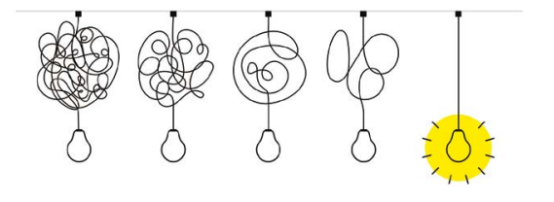Editing into Plain English
Luke Finley, Laura Ripper and Sarah Carr (2nd edn, SfEP Guides, 2019), 37pp, £6/12 hard copy, £5/10 PDF (members/non-members)
ISBN 978 1 9164374 8 7 (hard copy), ISBN 978 1 9164374 9 4 (PDF)
Reviewed by Riffat Yusuf
I have a feeling that some editors will bypass this guide. Editing copy into plain English would appear to be a process of making things clear and simple; who can’t do that? If you’re used to working with text for a range of registers, then rendering unwieldy sentences readable to most people isn’t that much of a stretch, is it? No, it isn’t, if that’s what you think plain-English editing is.
The purpose of Editing into Plain English is explained in three helpful bullet points (it’s only just occurred to me that that’s a plain-English thing right there). We start with an introduction to the concept of plain English and plain-English techniques. Then there’s a section on identifying the market for plain-English skills, followed by help in finding work.
If you’re not a plain-English practitioner, have a go right now at defining plain English. If you asked me, I’d start by saying that making text plain goes further than making it clear – that’s because I lifted it verbatim from the guide. Read the definition used by the International Plain Language Federation (Chapter 2) and you will learn that plain English is much more than readers being able to understand words.
 As the guide shows, advocates of plain writing have influence, scope and even a nifty backronym (perhaps I’m easily impressed, but hello Plain Language Association InterNational). The work of organisations such as the Plain English Campaign and Clarity International has value not just for people who rely on plain-English materials (think NHS pamphlets, application forms and legal advice), but also for the editor seeking new opportunities. Here, Laura, Luke and Sarah explain why public and private sector employers will increasingly seek out your plain-English skills for marketing purposes and online content editing.
As the guide shows, advocates of plain writing have influence, scope and even a nifty backronym (perhaps I’m easily impressed, but hello Plain Language Association InterNational). The work of organisations such as the Plain English Campaign and Clarity International has value not just for people who rely on plain-English materials (think NHS pamphlets, application forms and legal advice), but also for the editor seeking new opportunities. Here, Laura, Luke and Sarah explain why public and private sector employers will increasingly seek out your plain-English skills for marketing purposes and online content editing.
Editors will appreciate the guide’s evidence-based ammo and handy myths table should they wish to promote plain-English services to clients. And if you are ready to branch out, obviously after you’ve completed the oft-plugged Plain English for Editors course, you’ll want to know about services and pricing (Chapter 4). Avid readers of SfEP’s Code of Practice will know that plain-English editing may be classed as Level 3 – in plain money this means you can charge as you would for substantive or development editing. With this in mind, the guide advises on what you can bring to the table when quoting for clients who have unrealistic assumptions about plain-English editing processes.
As for seeking out clients, there are comprehensive pointers in Chapter 5 along with tips on marketing your services. Finessing how you put yourself out there is particularly instructive for Yosser Hughes editors like me, and for editors who wait for opportunities to pop up on Indeed. Also me. There’s enough who/what/when direction provided to allow you to plan workable entry points to plain-English editing projects, and even to entice you to try Laura and Luke’s course.
I wanted to report that the list of resources, right at the end, was ever so helpful without actually bothering to go through it. What, apart from invaluable advice on upskilling and diversifying, would I gain from consulting the publications and links suggested by the authors? SfEPer, I clicked. Yes, definitely worth an amble if only to arrive at a question not many of us take the time to ponder: what are the best stain removers for crow poo?
